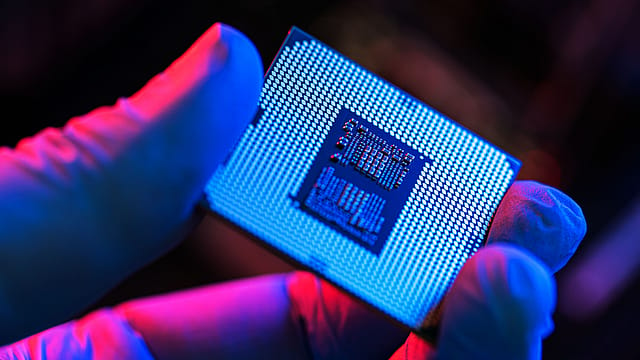‘No changes in India's chip goals’: Govt as Foxconn-Vedanta JV falls through
ADVERTISEMENT

A day after Taiwanese electronics giant Foxconn pulled out of its ₹1.54 lakh crore joint venture with Vedanta Ltd, the Anil Agarwal-led mining major’s shares fell 1.2% to ₹279.1 on the Bombay Stock Exchange. The stock opened a gap down at ₹275 against the previous close of ₹282.25 and recorded an intra-day low of 2% at ₹274.9. At the current share price, the company's m-cap stands at ₹1,03,746.96 crore. In contrast, the BSE Sensex is up 0.67% at 65,784.55, while the Nifty is up 0.70% at 19,490.75 points today.
The stock reaction comes a day after Foxconn's withdrawal from the much-touted chip JV following which Vedanta said it has lined up "other potential partners to set up India's first foundry".
"We will continue to grow our Semiconductor team, and we have the license for production-grade technology for 40 nm from a prominent Integrated Device Manufacturer (IDM). We will shortly acquire a license for production-grade 28 nm as well," a company spokesperson says.
He adds that Vedanta has "redoubled its efforts to fulfill the Prime Minister's vision for semiconductors and India remains pivotal in repositioning global semiconductor supply chains.”
Foxconn on Monday said it'll not move forward on the joint venture with Vedanta. "Foxconn is working to remove the Foxconn name from what now is a fully-owned entity of Vedanta," the Taiwanese chips major said.
January 2026
Netflix, which has been in India for a decade, has successfully struck a balance between high-class premium content and pricing that attracts a range of customers. Find out how the U.S. streaming giant evolved in India, plus an exclusive interview with CEO Ted Sarandos. Also read about the Best Investments for 2026, and how rising growth and easing inflation will come in handy for finance minister Nirmala Sitharaman as she prepares Budget 2026.
The government, meanwhile, has also said the withdrawal of Foxconn from its JV with Vedanta "changes nothing" about India's semiconductor goals.
Union minister of state for electronics & technology Rajeev Chandrasekhar said it will allow "both companies to independently pursue their strategies for Indian Semicon n Electronics. To quote Foxconn "Foxconn is confident abt direction of India's semiconductor development"."
He said it's well known that both companies had no prior semicon experience or tech, and were expected to source fab tech from a tech partner. "While their JV VFSL had originally submitted a proposal for 28nm fab, they could not source appropriate tech partner for that proposal."
Vedanta via VFSL has recently submitted a 40nm fab proposal backed by a tech licensing agreement from a global semicon major, which is currently being evaluated by the Semiconductor India Tech Advisory group, he said.
"It's not for govt to get into why or how two private companies choose to partner or choose not to, but in simple terms it means both companies can & will now pursue their strategies in India independently, and with appropriate technology partners in Semicon and Electronics."
Vedanta in February this year officially partnered with chip electronics major Hon Hai Technology Group, which is the world's largest contract electronics manufacturer and the supplier of Apple iPhone, to produce semiconductors in India as the country eyes to reduce dependence on imports of key electronics components.
Vedanta held a majority of equity in the JV, while Foxconn was the minority shareholder. The JV was expected to boost Prime Minister Narendra Modi’s vision to create an ecosystem for semiconductor manufacturing in India.
The Anil Agarwal-led Vedanta Group and Foxconn had selected Dholera Special Investment Region (SIR) in Gujarat for setting up India’s first semiconductor manufacturing facility. The ₹1.54 lakh crore worth of JV was likely to generate around one lakh direct jobs.
Besides, Vedanta last week also announced the addition of “semiconductors and display glass manufacturing ventures” to its diversified portfolio. "The acquisition will be effected by way of a share transfer at face value of Twin Star Technologies Limited’s (“TSTL”) Semiconductor and Display SPVs. TSTL is a wholly-owned subsidiary of Volcan Investments Limited, the ultimate holding company of Vedanta Limited."
India’s semiconductor component market is expected to rise manifold to touch the total revenue worth $300 billion during 2021-2026, joint research by the India Electronics & Semiconductor Association (IESA) and Counterpoint Research has revealed. The share of local sourcing is expected to grow to over 17% by 2026, which translates into a six-fold rise in locally-sourced semiconductor revenues.
